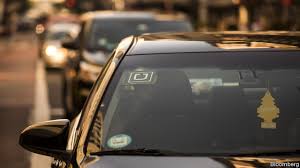The social costs of ride-hailing may be larger than previously thought

ECONOMISTS HAVE always been fond of Uber. Its willingness to battle incumbents, use of technology to match buyers and sellers, and embrace of “surge” pricing to balance supply and demand make the ride-hailing giant a dismal scientist’s dream. Steven Levitt, the author of the bestselling “Freakonomics”, called it “the embodiment of what the economists would like the economy to look like”. But if economists subjected Uber and its competitors to a cost-benefit analysis, they might not be so impressed.
This might surprise customers. A study in 2016 by researchers from Oxford University, the University of Chicago and Uber itself found sizeable benefits from ride-hailing services for consumers. Using data from 48m Uber trips taken in four American cities in 2015, they estimated the difference between how much customers were willing to pay and their actual fare. Each $ 1 spent on UberX rides generated a “consumer surplus” of $ 1.60. Across America, that surplus was estimated to be $ 6.8bn a year.
Drivers also benefit. Few sign up for lack of anything else, as is true of some gig work: in America roughly eight in ten have left another job to get behind the wheel. The typical American Uber driver makes $ 16 per hour ($ 10 after expenses), higher than the federal minimum wage. In London earnings after expenses come to £11 ($ 14) per hour and a recent survey found Uber drivers reporting higher levels of life satisfaction on average than other workers.
But against these benefits, there are costs to weigh. Far from reducing congestion by encouraging people to give up their cars, as many had hoped, ride-hailing seems to increase it. Bruce Schaller, a transport consultant, estimates that over half of all Uber and Lyft trips in big American cities would otherwise have been made on foot or by bike, bus, subway or train. He reckons that ride-hailing services add 2.8 vehicle miles of driving in those cities for every mile they subtract.
A new working paper by John Barrios of the University of Chicago and Yael Hochberg and Hanyi Yi of Rice University spells out one deadly consequence of this increase in traffic. Using data from the federal transport department, they find that the introduction of ride-sharing to a city is associated with an increase in vehicle-miles travelled, petrol consumption and car registrations—and a 3.5% jump in fatal car accidents. At a national level, this translates into 987 extra deaths a year.
What could be done to tip the balance back to benefits overall? “Congestion pricing is the most direct solution,” says Jonathan Hall of the University of Toronto. Several cities, including London, Stockholm and Singapore, have moved in this direction, charging drivers for entering busy areas at peak hours. If ride-hailing firms tweaked their pricing to encourage carpooling, that would help, too.
One of the worst things a city can do, says Mr Barrios, is to cap the number of ride-hailing cars on their streets, as New York did in August. That marked a step back towards the days when barriers to entering the taxi market were high and competition was low. A dismal outcome, as most right-thinking economists would agree.
This article appeared in the Finance and economics section of the print edition under the headline “A hard bargain”